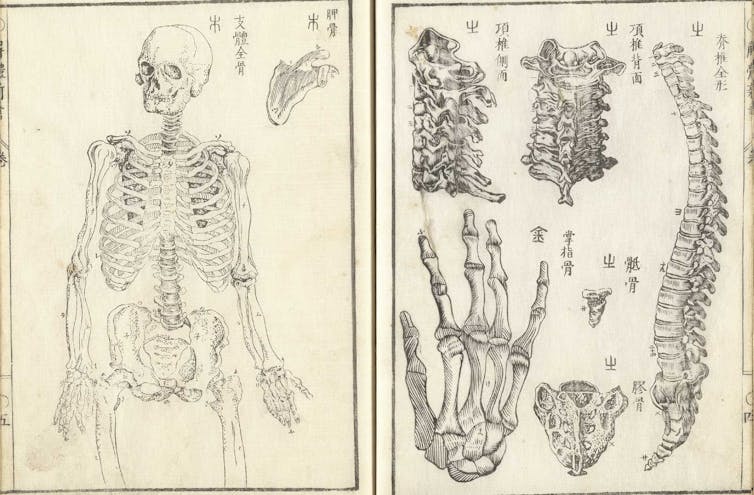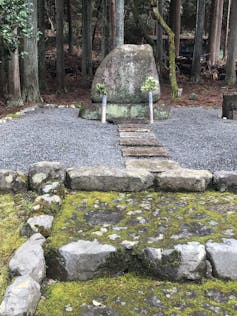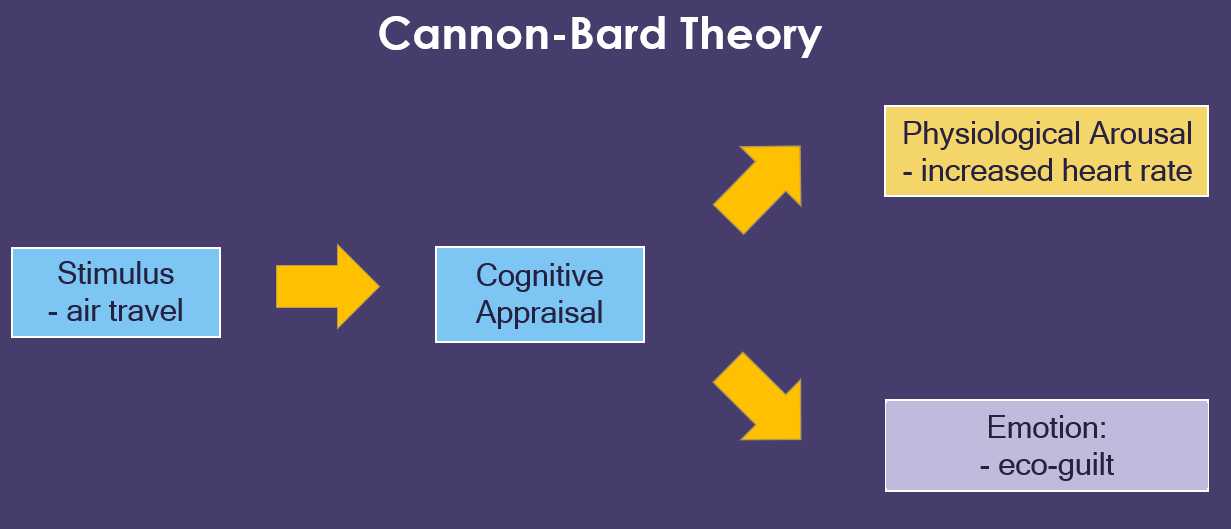an Asian perspective on science and other forms of knowledge
[ad_1]
Several well-intentioned efforts seek to incorporate mātauranga Māori (Māori knowledge) into science in New Zealand. These include a pilot National Certificate in Educational Achievement (NCEA) programme in biology and chemistry which places mātauranga Māori concepts on an equal footing with science. Other proposals aim to do the same for university science curricula and science policy.
For some, these efforts are a welcome move, while others view them as cause for concern. I wish to contribute an Asian scientific perspective on this discussion.
Why is an Asian perspective relevant? First, Asians constitute about 15% of the population of Aotearoa. It is important not to forget that conversations on science, and our national education curriculum, are relevant to us all.
Second, Asia is emerging as a global science leader. Asian universities now rank among the top 25 in engineering, biology, physics and astronomy and chemistry. While one can quibble about rankings, no Australian or New Zealand universities rank this well.
Japan – from where one side of my heritage stems – is part of this trend, despite having been perhaps the most insular country of the past 500 years. In recent years, Japanese scientists have won Nobel prizes for the invention of blue-light LEDs (used in phone screens) and lithium-ion batteries (used in electric cars).
Read more:
Let’s choose our words more carefully when discussing mātauranga Māori and science
Japan is a science powerhouse and Japanese culture also has concepts similar to those being considered for the NCEA science curriculum: whakapapa, mauri and kaitiakitanga are all familiar to us. Shinto, Japan’s indigenous religion, is polytheistic and animistic, and, like Māori culture, ours has also found currency globally (think judo, manga, haiku).
Importantly for New Zealand’s national conversation, in charting a path as emerging science leaders, Japan and other Asian countries have grappled with how modern science and traditional knowledge systems interact. As such, I believe Asians have a helpful perspective to offer, and I offer mine in good faith.
Japan and ‘Western’ science
Let’s take a look at the origin of modern science in Japan, which was not so much Western as Dutch.
Our story begins in 1771 at Kotsugahara (the Plain of Bones). Physicians attended the execution of a murderer to observe the executioner dissecting the body, as was the custom in those days. Their interest in such a gruesome event? To compare a Japanese medical text with a Dutch one, Ontleedkundige Tafelen (Anatomical Tables).
At the execution, physician Sugita Genpaku and his colleagues realised the superiority of the Dutch text and resolved there and then to translate it. The resulting book, Kaitai Shinsho (New Book on Anatomy), became Japan’s standard text on anatomy.

National Library of Medicine
It overturned the orthodoxy of the time, where physicians would keep their knowledge secret, teaching it only to their disciples. This episode is remembered at a memorial in Tokyo:
Rangaku (Dutch studies) sprang from here and served to revitalise the progress of modern Japanese science.
This episode reveals some things about science: science should be shared for the betterment of humanity, and any concept can be translated into any language. This is not trivial. Sugita documented this challenge in Rangaku Koto Hajime (The Beginning of Dutch Learning).
Sugita recounts how he and his colleagues had to understand Dutch words without Japanese equivalents and create those equivalents.
Read more:
Eat your heart out, scientists: evidence is a balancing act
Sugita is known for another episode that shows how science works: physician Kagawa Gen’etsu claimed in his book, Sanron (1765), that a developing foetus is positioned head-down in the womb. Sugita expressed skepticism, as this was not documented in Dutch or traditional texts.
On later discovering that Kagawa’s observations were correct, he openly admitted his error. Not all scientists are as honourable as Sugita, but over time the scientific process tends to correct errors and zero in on the truth.
These early steps illustrate the scientific mindset when confronted with new knowledge. Sugita writes:
We were ashamed of having lived […] in […] complete ignorance […] without the slightest idea of the true configuration of the body, […] this should have been considered the foundation of our art.
A different way of knowing?
So how has Japan reconciled traditional and modern knowledge? Did it develop a different “way of knowing”, a new form of science?
Novelist Tanizaki Junichiro pondered this in In’ei Raisan (In Praise of Shadows, 1933), in which he criticises modernity and praises Japanese aesthetics, which favour shadows and imagination:
Suppose […] we had developed our own physics and chemistry: would not the techniques and industries based on them have taken a different form, would not our myriads of everyday gadgets, our medicines, the products of our industrial art – would they not have suited our national temper better than they do? In fact our conception of physics itself, and […] chemistry, would probably differ from that of Westerners; and the facts we are now taught concerning the nature and function of light, electricity and atoms might well have presented themselves in different form.
Read more:
How Indigenous knowledge advances modern science and technology
The answer from every instance of the adoption of science across Asia is a resounding no. Physics and chemistry are not cultural or aesthetic constructs; they are concerned with phenomena that exist even if our species does not.
Tanizaki, who had a penchant for irony, goes on to say: “Of course I am only indulging in idle speculation; of scientific matters I know nothing.”
Tradition and science intertwined
Our next stop is Manshu-in temple in Kyoto, and the “microbe mound”, kinzuka. It carries an inscription by microbiologist Sakaguchi Kinichiro:

To the innumerable souls of microbes
Who have dedicated and sacrificed
For the existence of humans,
We pay our deepest respect.
Here we hold a memorial service
For their souls’ rest and condolence,
Building a microbe mound.
Kinzuka is not scientific, but it offers scientists an opportunity for reflection. It is something quite unique to Japan. By contrast, stepping inside Japanese laboratories, one could be anywhere in the world. The methods are standard, the equipment recognisable. And when we swap protocols, they can be readily applied in any lab, albeit with a little translation.
The details of how to grow microbes or how to extract DNA from them are separate from Japanese culture – or indeed any culture.
Some Japanese research is informed by culture and art, however. One example is Aizome (indigo dyeing), which involves extracting dye by fermenting indigo leaves. The traditional process is fascinating, and no artisan needs a scientist’s insights to improve their craft.
The scientific part is understanding exactly how fermentation extracts the dye; no artisan knows this. After revealing how the microbial fermentation process works, my colleagues did something quite astonishing – they used this knowledge to develop a fuel cell. In this case, tradition has inspired new science.
Cultural treasures and science
I have touched on religion, but I want to end by diving in at the deep end: science inevitably comes into conflict with some forms of knowledge. Our oldest text, Kojiki (Record of Ancient Matters, 711CE), recounts oral traditions, myths and kami (gods). It states that the emperor’s genealogy traces to Amaterasu, the sun goddess.
As a scientist, I understand that if held up to the light of modern genetics, linguistics or geology, these stories, if taken literally, are absolute nonsense. But that does not detract from the central place of these myths in Japanese culture. They are treasures not to be conflated with science.
Read more:
Let’s choose our words more carefully when discussing mātauranga Māori and science
I can think of no better embodiment of how our national religion, Shinto, sits alongside science than the former Emperor Akihito. It is remarkable to learn that he is a keen ichthyologist (fish biologist). Writing in the journal Science, he states:
Since science pursues truth and scientific methodology puts truth to the use of mankind, it is desirable that such studies be pursued through cooperation that transcends national and other boundaries.
But how can he espouse science and be akitsumikami – “a god in manifestation”?
Japanese, Māori and Western thinkers have all resolved this paradox by recognising that religion and science don’t overlap. One deals with facts and theories, the other with moral meaning and value, and as evolutionary biologist Stephen Jay Gould noted:
[T]hey bump right up against each other, inter-digitating in wondrously complex ways along their joint border.
This is worth considering in Aotearoa’s national discussions about which parts of mātauranga Māori belong in science and which belong in other subjects. For instance, arguing that mauri is an identifiable life force is problematic for science because there is no such force, but we can understand the cultural values inherent in such a term.
The Japanese equivalent, ki, is peppered through everyday language. For instance, when we say ki o tsukete (take care), the literal translation would be “switch on your mauri”.
That the Japanese imperial family descend from kami, and Māori whakapapa to atua, are also ideas that fall outside science. Japanese aesthetics finds beauty in shadows and lurking ghosts, but there is also beauty in the illumination that science sheds on the world.
This point is well understood by some of the most eminent Māori thinkers, including professor of Māori Studies Mason Durie:
You can’t understand science through the tools of mātauranga Māori, and you can’t understand mātauranga Māori through the tools of science. They’re different bodies of knowledge, and if you try to see one through the eyes of the other, you mess it up.
We need to explore the border between mātauranga Māori and science. This may yield new knowledge (like the Aizome-fuel cell), but some parts will be better treated as non-overlapping.
We must also recognise the value of scientific progress, and the legacy of Sugita Genpaku, whose embrace of Dutch studies sealed the fate of much of traditional Japanese medicine – in the service of improving it.
[ad_2]
Source link



